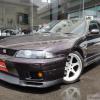Simple Timing Question Here.
Announcements
-
Similar Content
-
Latest Posts
-
I swear at my GKTech ones every time I have to take them apart and replace a spherical. But I wouldn't swap them for anything else. They absolutely slay every other option, at least in terms of how they actually work. You sure you don't want to live with bearings? I mean, they don't have "ball bearings". They are rod ends and sphericals throughout. Tough as nuts, even though I have found more than one way to wear them out.
-
From when I was looking at getting the 86 engineered for the turbo, the joint said to put in a few euro 5 or 6 cats, then tune the car on a nice clean E85 tune When I was looking at a turbo for the MX5, it was basically the same thing, a couple of cats and a nice clean tune Although, it will depend on the year of the Jeep IRT emmisions standards required, and what mods are done, especially if it has a newer engine installed that requires a higher Euro
-
Yeah - but it's not actually that easy. There are limits for HC, CO, NOx and particulates. Particulates shouldn't be a concern in any petrol engine unless trying to comply to the very latest Euro standard. But getting a tune right so that all the others stay within limits AT THE SAME TIME is not a trivial exercise. You couldn't possibly get it right by just guessing at the tuner's dyno, unless he had a 4 gas analyser up the pipe, which is not often the case these days. It used to be. Every decent shop that did "tune ups" (as opposed to tuning) would have a 4 gas analsyer. Perhaps there's still quite a few of them around these days. But most "tuners" are only watching O2 and power readings.
-
Slight segway but the most expensive part of the whole thing which I would have thought would only be required for an engine size/type swap, not a VIV test, is emissions testing. That's when you get into the big bucks. I can't remember the exact price now but I got quotes for the GT-R based on swapping to RB30 (not that anyone bothers doing it legally anymore...) and it was around $4500 just for that alone. The guy that does them manipulates the tune on the vehicle to make sure it passes. The cheaper option is to book into Kangan Batman Tafe (I think that's where it was) and hire their tester. Allegedly you're not allowed in there with the car though so not in a position to tweak anything to make sure the vehicle passes. I'm sure in this day and age of ultra tuneable ECU's you could get the tuner to program a special efficiency (clean) tune that emits the lowest amount of particulates possible that would pass the test. It might only make 50kW's but as long as it passed who cares!
-
I'm sure he has left signs, or, he is looking down, laughing That's my cunning plan for when I leave, lots of half finished projects, with no rhyme or reason of where I was actually up to, just to keep everyone on their toes
-






Recommended Posts
Create an account or sign in to comment
You need to be a member in order to leave a comment
Create an account
Sign up for a new account in our community. It's easy!
Register a new accountSign in
Already have an account? Sign in here.
Sign In Now